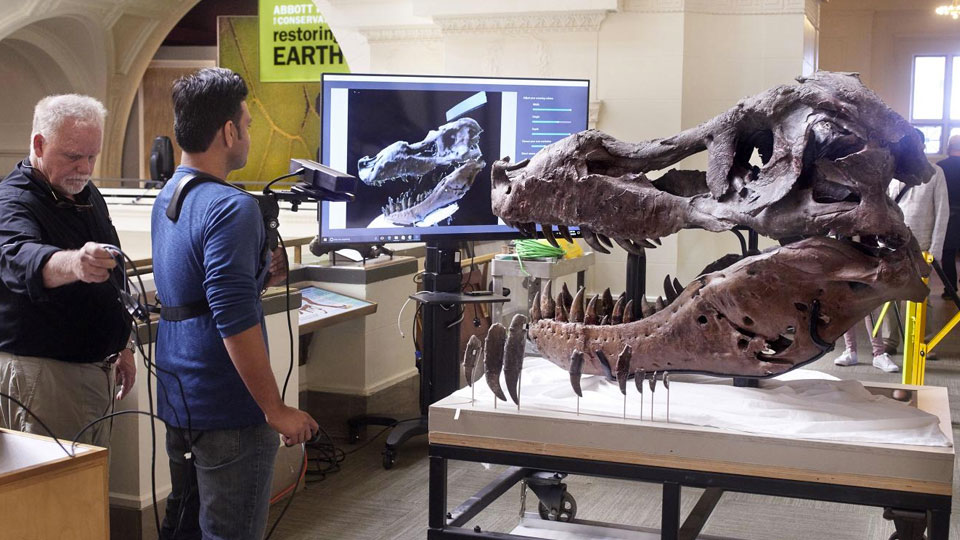Get your Kinect out of storage, you can use it to scan dinosaur skulls!
We’re not over-excited, you’re over-excited

A team of palaeontologists has discovered an unconventional method for scanning a T-rex skull at the Field Museum of Natural History in Chicago. The team of forensic dentists (yes, forensic dentists are a thing) discovered that its high-resolution dental scanners couldn’t handle a subject the size of Sue the T-rex, so had to resort to alternative means.
It contacted MIT’s Camera Culture group, which came up with a solution that involved using the Microsoft Kinect and some free software, to scan the entire length of the skull. Once the 3D render was complete, the team could then 3D print a model of the skull so that they could investigate some strange holes in the skull.
There have been a couple of theories about what had caused the holes in the skull, including the obvious, that Sue had been bitten by another dinosaur in a savage, tree toppling, earth shattering battle (sorry, getting carried away, dinosaurs). Or that Sue had contracted a disease from eating infected prey that had penetrated Sue’s jaw from the inside out (so cool).
That's a far cry from using the Kinect for its original intended purpose, tracking our killer moves on Dance Central.
Let's go fossil hunting
Sue’s skull, discovered in 1990, is the largest and most complete skull of a T-rex yet found, so the idea of actually physically examining and potentially damaging the skull is a massive risk.
The Kinect solution is an interesting one, because it is so much cheaper and easier to put together than the set-up that would typically have to be used in this situation. Given that it’s a few years old now, you can pick up a Kinect for about $100. Compare that to a high-end commercial 3D scanner which can cost tens of thousands of dollars, and suddenly 3D scanning becomes a lot more accessible.
The Kinect of course doesn’t have the same level of resolution that the high-end scanner will, but is more than good enough to create a scan that can be turned into a 3D model. Once the scan of Sue’s skull was complete, the team discovered that the holes came from the outside, but were at irregular angles so couldn’t have been from teeth. There go those theories.
Get daily insight, inspiration and deals in your inbox
Sign up for breaking news, reviews, opinion, top tech deals, and more.
What’s really exciting about this is that it opens up the ability for people to share discoveries too fragile or difficult to move, from anywhere the world. So if you ended up discovering a velociraptor fossil (which were actually the size of a turkey – sorry Jurassic Park fans) in your garden, you could get your old Kinect out of storage, and share a 3D scan with the world, just using free MeshLab software.
- Want to see our verdict of the Xbox One X? Check out: Hands on: Xbox One X review
Via TechXplore
Andrew London is a writer at Velocity Partners. Prior to Velocity Partners, he was a staff writer at Future plc.
